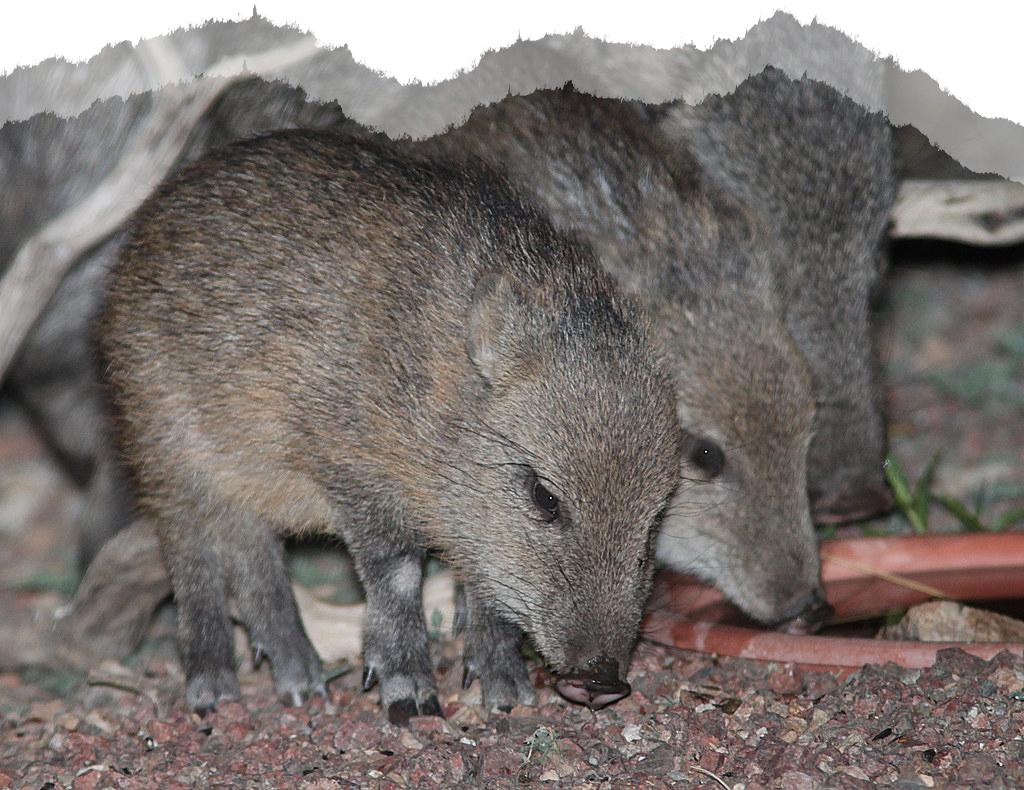
Javelina

Are Javelinas pigs?
The peccary, commonly known as the Javelin, Javelina, what will be referenced in this article, or Musk hog, may be many things, but not a pig. Despite their similar appearance, the javelina is from the New World, whereas pigs are of the Old World. Their primary differences are more subtle, though still very prevalent in their physical structure. A few differences are as follows: the javelina has three toes on the hind foot (the wild pig has four), the javelina has 38 teeth (the wild pig has up to 44 teeth), the javelina has straight canine teeth (the wild pig has predominately curved canine teeth), the javelina has a short tail (the wild pig has a long one), and, finally, the javelina has scent glands (and the wild pig does not). These distinctions are some of the ways in which the javelina is distinguished from wild pigs, considering their foremost outward form is almost identical.

Get to know the Javelina.
Javelinas have a large head and circular snout, small ears, short legs, and plump body that is covered in coarse black hair as well as a thin white collar around the neck. They average 2 feet in height, 3 to 4 feet in length, and weigh up to 55 pounds. The normal lifespan of a javelina in the wild is 7 years, though they have been recorded to live as many as 20 years. They are social animals who forge together in groups or “bands” ranging from 10 to 50 javelinas. The javelina is a known herbivore, surviving off of succulents, cacti, grasses, bulbs, prickly pears, etc. They have the ability of retaining water from such plants, which inherently makes water less of a viable asset to them on occasion. In addition, their peek eating times are morning, late afternoon, and evening; nighttime scavenging occurs only during summer seasons. Depending on the geographical location of the javelina, they will rest for the night in cervices and canyons within rock, shallow depressions within the Earth or heavily shrubby areas; they also huddle together for warmth and protection from looming predators.


Where can the Javelina be found?
The javelina is found within South America and the more southern regions of North America with a presence within Texas, New Mexico, and Arizona. Particularly within Texas, the javelina is regarded as a game animal, hunted for sport, which has resulted from their notorious reputation of up-turning prized agricultural lands. Along with being human prey, they are also threatened by other predators such as coyotes, bobcats, mountain lions, and even black bears; these aspects, in part, factor into the mortality rate of javelinas, which is 50% or higher at times.

When does breeding season begin for the Javelina?
Breeding season for the javelina is all throughout the year and for a lifetime after their first year. Most births take place in the spring and summer months of May, June, and July after a gestation period of 5 months. Javelinas will birth one to two offspring also known “reds” because of the vibrant copper tone they have when first born. The reds are weaned after 2 months and are able to consume solid foods, thereafter. They sometimes stay within family bands and identify each other through the scent glands on their rumps, which they will brush upon their surroundings as well as other javelinas; this will allow them to identify one another and steadily maintain their territory.








